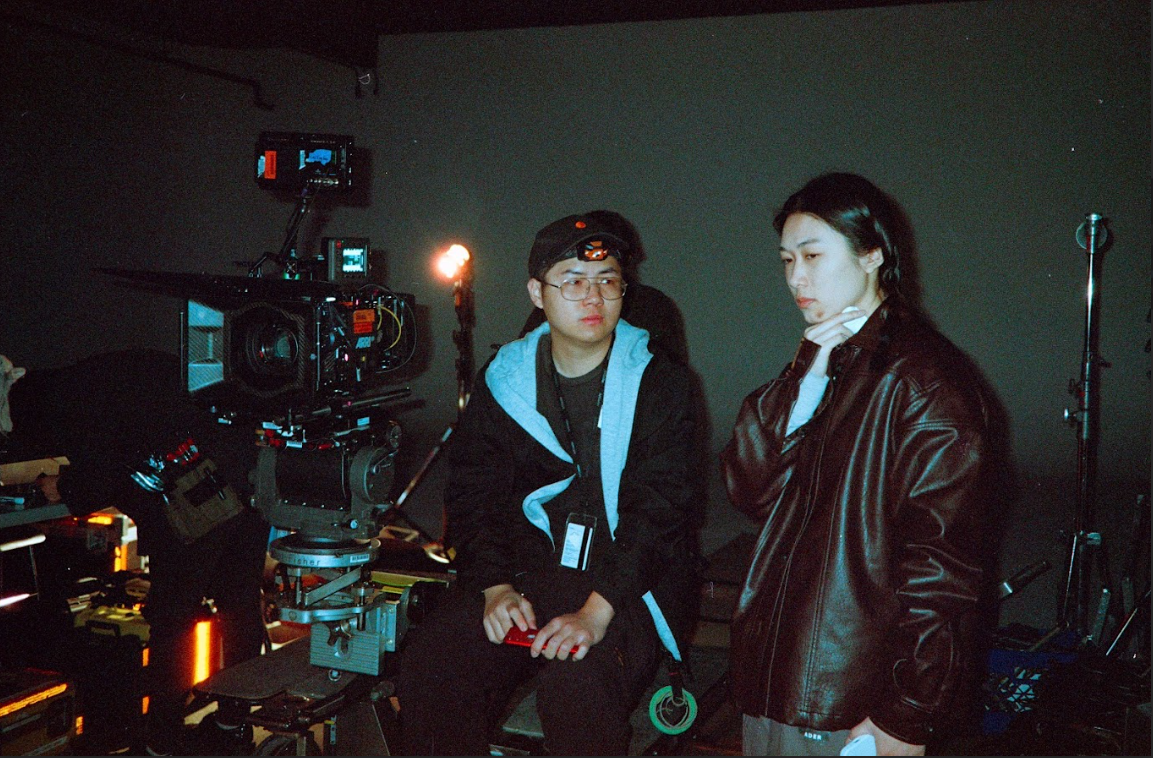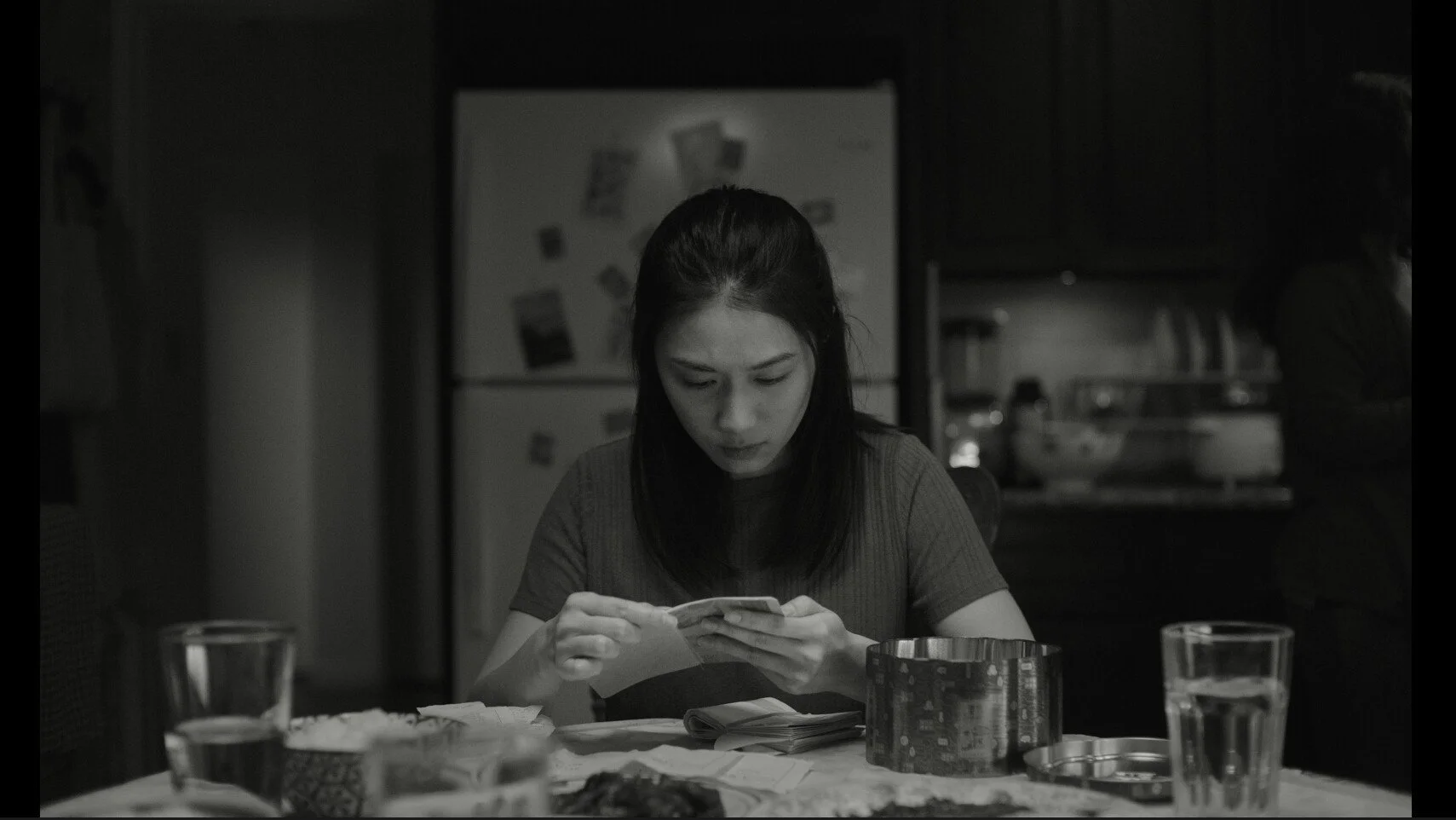Inside ‘‘So Long’’:Myth, Memory, and Migration
Welcome Mingfeng Li & Hanzhong Zhang, we are very excited to have you today with us to discuss about your work.
Who are Mingfeng and Hanzhong and how did the passion for creating begin for each one ?
Mingfeng Li: I am a filmmaker and a graduate of the Art Center College of Design, where I earned my MFA in Film. I began his career in commercial and product advertising before shifting my focus to narrative filmmaking. I am interested in exploring the lives of undocumented immigrants, using cinematic storytelling to connect audiences with their emotions and social realities.
Hanzhong Zhang: I am a film director and graduate of ArtCenter College of Design. My creative journey began with an interest in how images can express emotions that words often can’t. Influenced by avant-garde cinema and visual art,My work explores the subtle connections between people, memory, and time. I often use quiet imagery and minimal structure to reflect on themes of identity and transformation. Rather than focusing on traditional storytelling, My films aim to create a space for contemplation, where viewers can experience emotion through atmosphere and rhythm.
Can you tell us a bit about your previous work?
Mingfeng Li: I have worked as a gaffer on several USC and ACCD thesis projects, including “A Better Place”, “Saturn Return”, and “Focal Point”. These experiences helped me learn how to use lighting to set the mood, show emotion, and guide the audience’s attention. They also influenced my own filmmaking, "So Long", where lighting and visual design are key to creating atmosphere and emotion.
Hanzhong Zhang: My work spans creative commercials and short films, both centered on visual emotion and atmosphere. In commercial projects, I aim to bring a cinematic and human quality to brand storytelling, using design, rhythm, and tone to evoke feeling rather than just message. Alongside that, my short films explore memory, identity, and belonging through quiet, minimal imagery. Whether working for a brand or telling a personal story, I approach each project as a visual conversation — one that connects people through subtle emotion and thoughtful composition.
''So Long'' places an immigrant family at the center of a perilous journey. What inspired you to tell this story, and why through the lens of disappearance and waiting?
Disappearance and waiting is a natural way to tell this story. Many undocumented families trap in constant uncertainty—never knowing what will happen next or when they might be separated. By focusing on waiting, absence, and the moments in between, the film reflects the tension, vulnerability, and emotional weight of this family journey. It’s a way to make the audience feel the haunting pressure of living in the shadows, while also highlighting the quiet strength and hope that keeps the family moving forward.
CONVERSATION ABOUT: '‘So Long''
Immigrant narratives are often portrayed with hardship, but So Long introduces a haunting, almost mythic atmosphere. How did you balance realism with poetic storytelling?
In So Long, I wanted to tell an immigrant story that feels both real and dreamlike. The film shows the hardship and fear of undocumented life, but also explores the emotional side of their journey.
The jungle setting became more than just a location—it symbolized confusion, danger, and hope. Using mist, shadows, and layered sound, we created a mysterious atmosphere that reflects the characters’ inner struggles. At the same time, we kept their emotions and relationships grounded in reality. The actors used simple, natural dialogue to make the story feel true to life.
My goal was to let the audience feel both the reality and the emotion—to see the world through the characters’ eyes while experiencing a poetic sense of hope and struggle.
From a filmmaking perspective, what were the biggest creative or logistical challenges of bringing a jungle-centered story to life?
As a micro-budget project, creating a believable jungle scene was one of our biggest challenges. At first, we thought about filming in a real jungle, but we decided to shoot on a soundstage for better control over lighting, camera movement, and logistics. Turning an empty stage into a dense jungle took a lot of creativity and teamwork. Our production design team brought in three truckloads of real tree branches and clamped them onto C-stands to look like trees. We also added fake plants to make the space feel fuller and more natural. To make it look realistic, we used haze to create the humid, moody atmosphere of a nighttime jungle. Lighting was also key in shaping the depth and tone of the scene. Overall, building the jungle indoors required a smart mix of production design, lighting, and visual effects to make it feel real within the limits of a small scale production.
Could you talk about your visual language—lighting, camera movement, or framing—that helped capture both intimacy and danger in the family’s journey?
Lighting and camera movement played a key role in shaping the visual language of "So Long", helping us express both intimacy and danger throughout the family’s journey. For most of the film, we used high-contrast lighting to highlight emotional tension and uncertainty, giving the scenes a sense of inner conflict. Toward the end, we shifted to softer, high-key lighting to create warmth and a sense of emotional release, marking a visual contrast that reflects the characters’ transformation.
In terms of camera movement, we used handheld shots in our jungle scene to bring a raw, unstable energy to tense moments, allowing the audience to feel closer to the characters’ fear and confusion. In contrast, we used smooth dolly shots and steady framing in calmer scenes to emphasize stability and control. This visual contrast between chaos and stillness helped us balance intimacy with danger, guiding the audience through the emotional rhythm of the story.
The film touches on immigration, displacement, and survival. How do you hope So Long contributes to global conversations about migration and identity?
As a filmmaker, I hope "So Long" brings more attention and empathy to the struggles of illegal immigrants. Illegal immigration is not just local or national issues—they are global experiences that shape millions of lives. In today’s world, immigrants are often misunderstood or blamed for society problems they did not create. Through this film, I wanted to move beyond the stereotypes and show the human side of their journey—the fear, hope, and resilience behind survival. By following the story of one family, "So Long" invites the audience to see the emotional reality of those living and to understand their dreams and sacrifices.
In future projects, do you plan to explore similar genre intersections, or are there other genres you're eager to explore ?
Yes, I plan to explore different genres in future projects. I believe film is a borderless form of art, and I don’t want to limit myself to a single genre. Each story deserves its own style and tone, whether it’s drama, thriller, or fantasy. What matters most to me is the emotional truth and the message behind the story.
Even if the genre changes, the core values of my storytelling will stay the same—focusing on human connection, identity, and the struggles people face in different environments. We will continue experimenting with new genres and visual styles while keeping the same emotional depth.
If audiences walk away with just one question lingering in their mind after watching So Long, what do you hope it is?
I hope the audience walks away asking, “What is the real story behind "So Long" in our society?” I hope the audience could be curious about the real lives of people like the family in the film—why they struggle, what they hope for, and how they survive.
Just like Killers of the Flower Moon revealed the pain and injustice faced by the Native American community, So Long aims to open a window into the hidden struggles of Illegal immigrants. By learning more about their reality, I hope people can see beyond stereotypes, understand their humanity.







